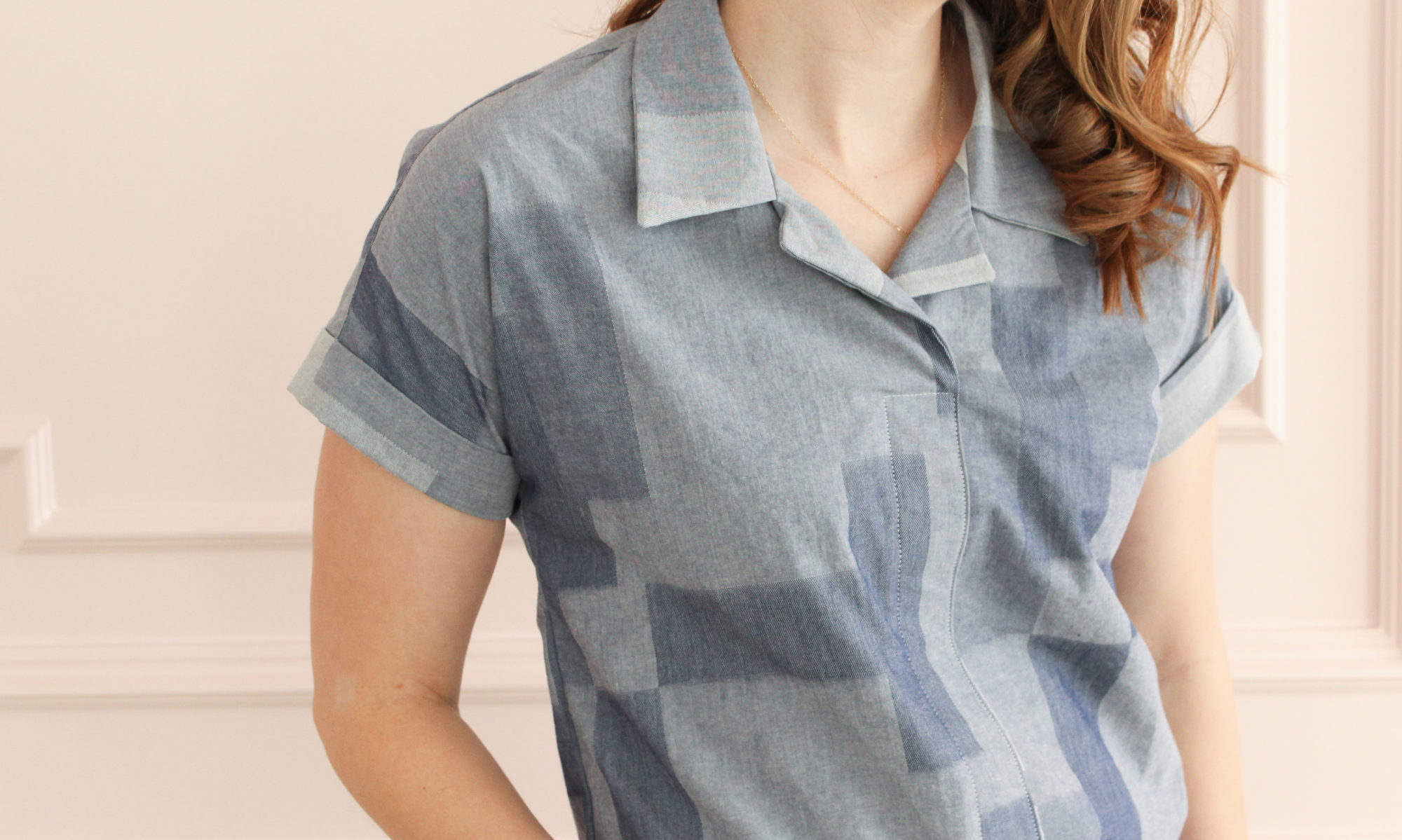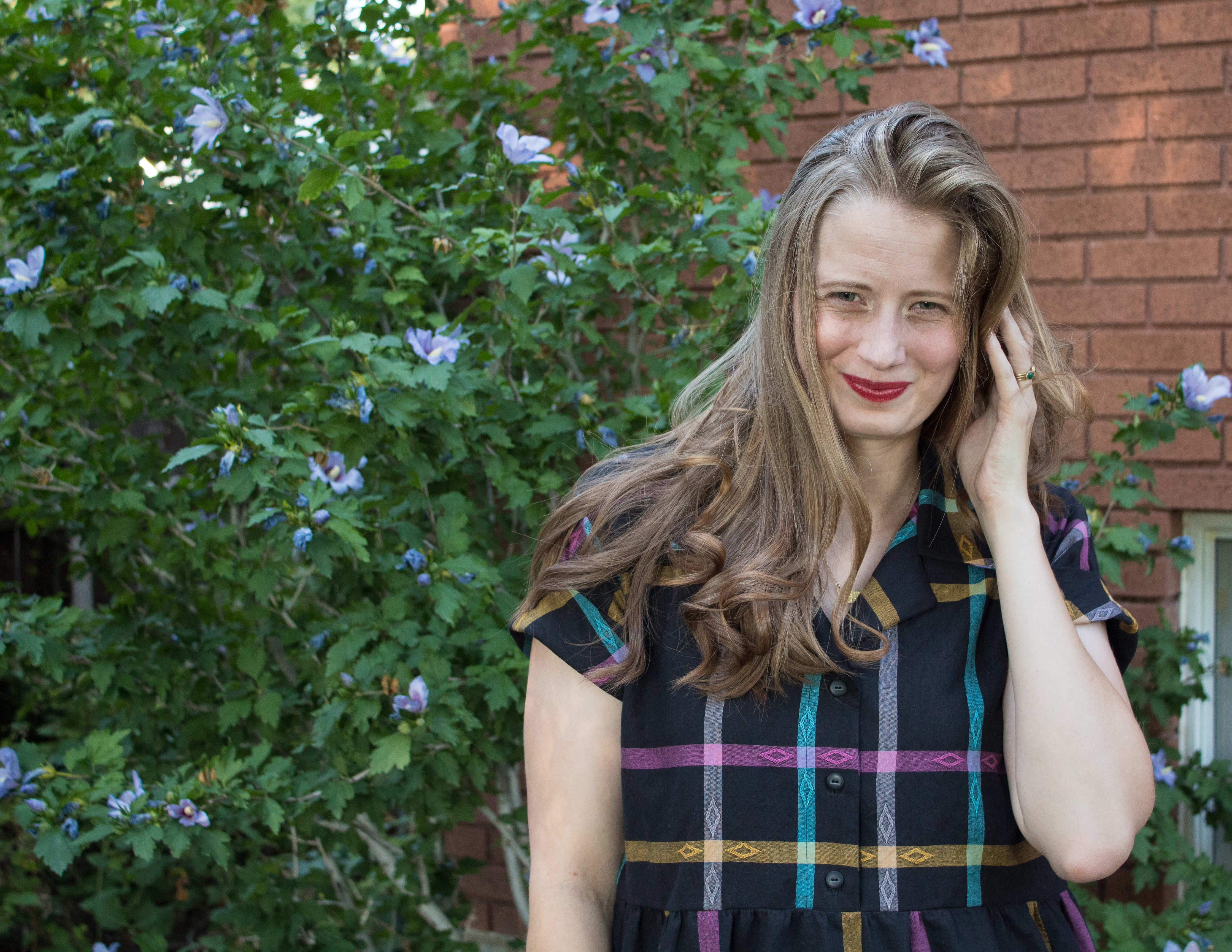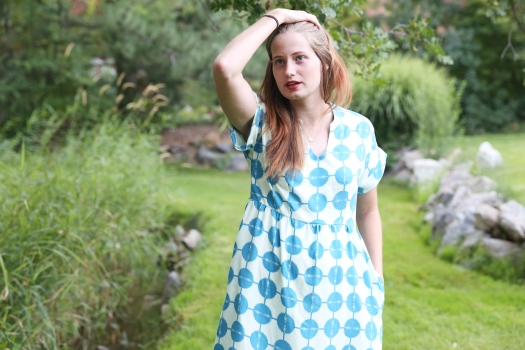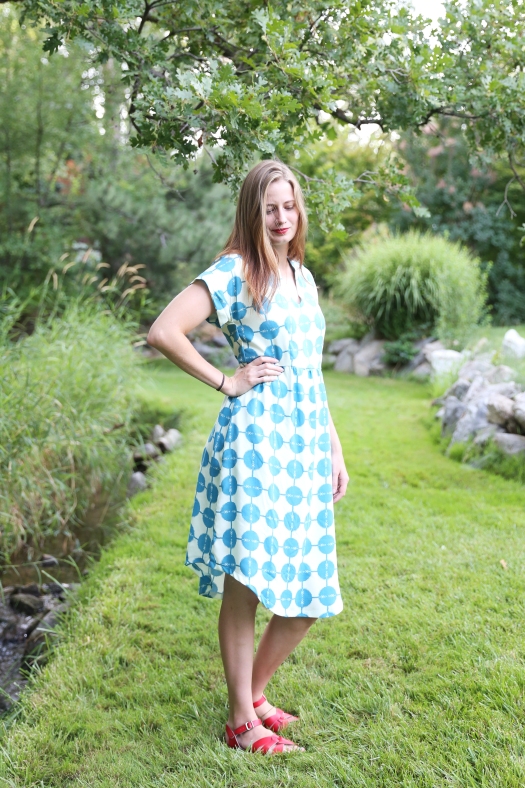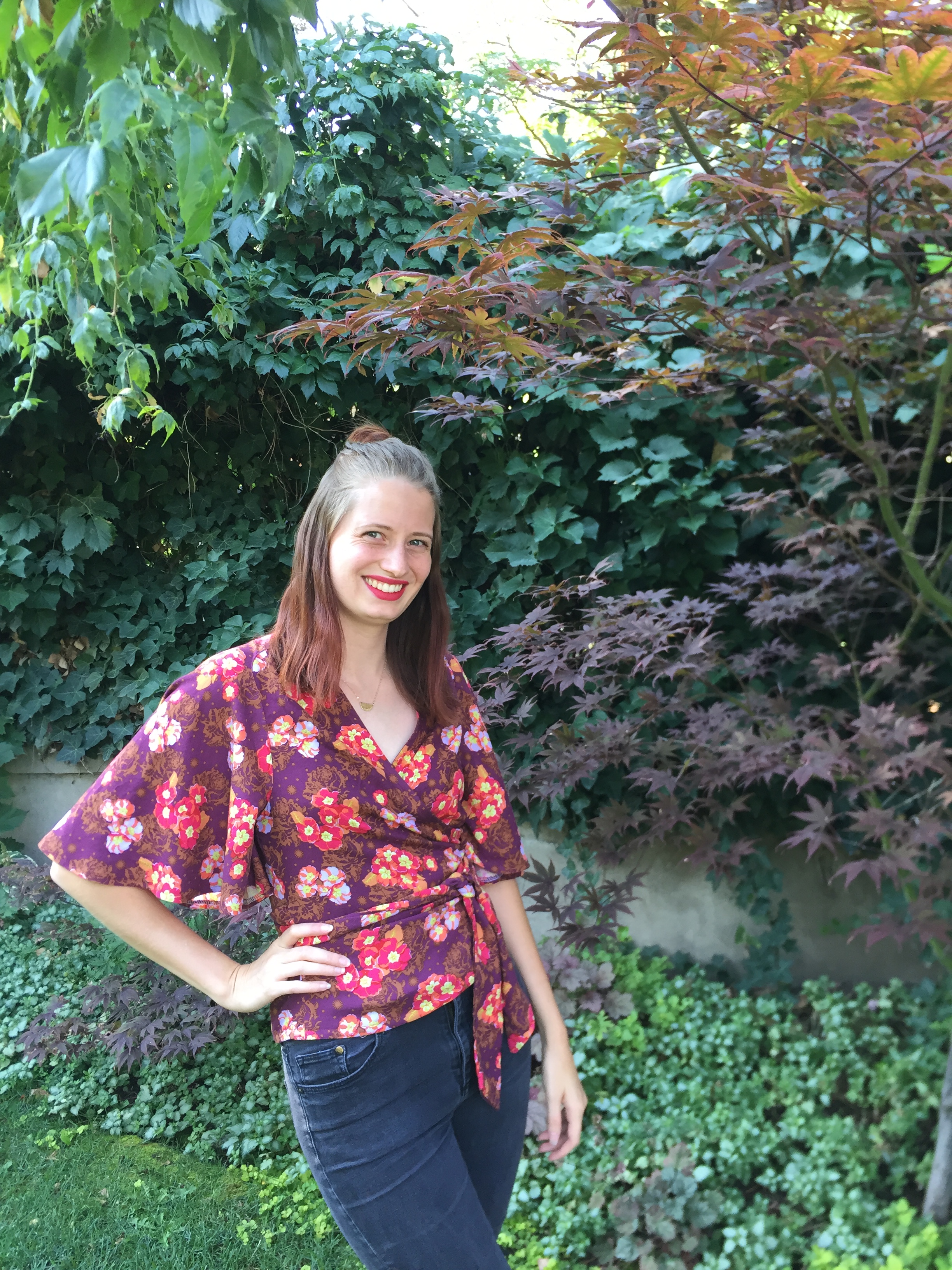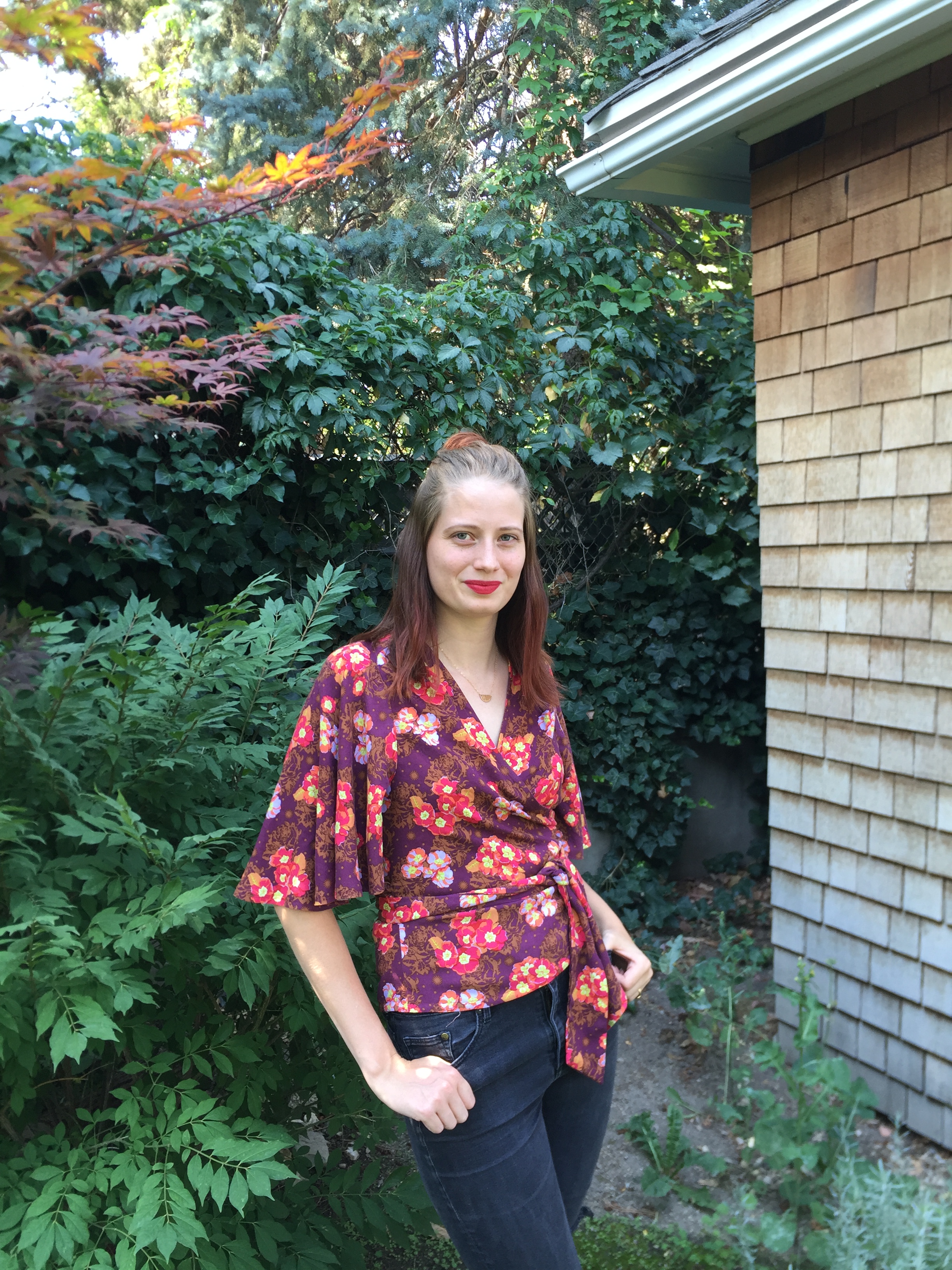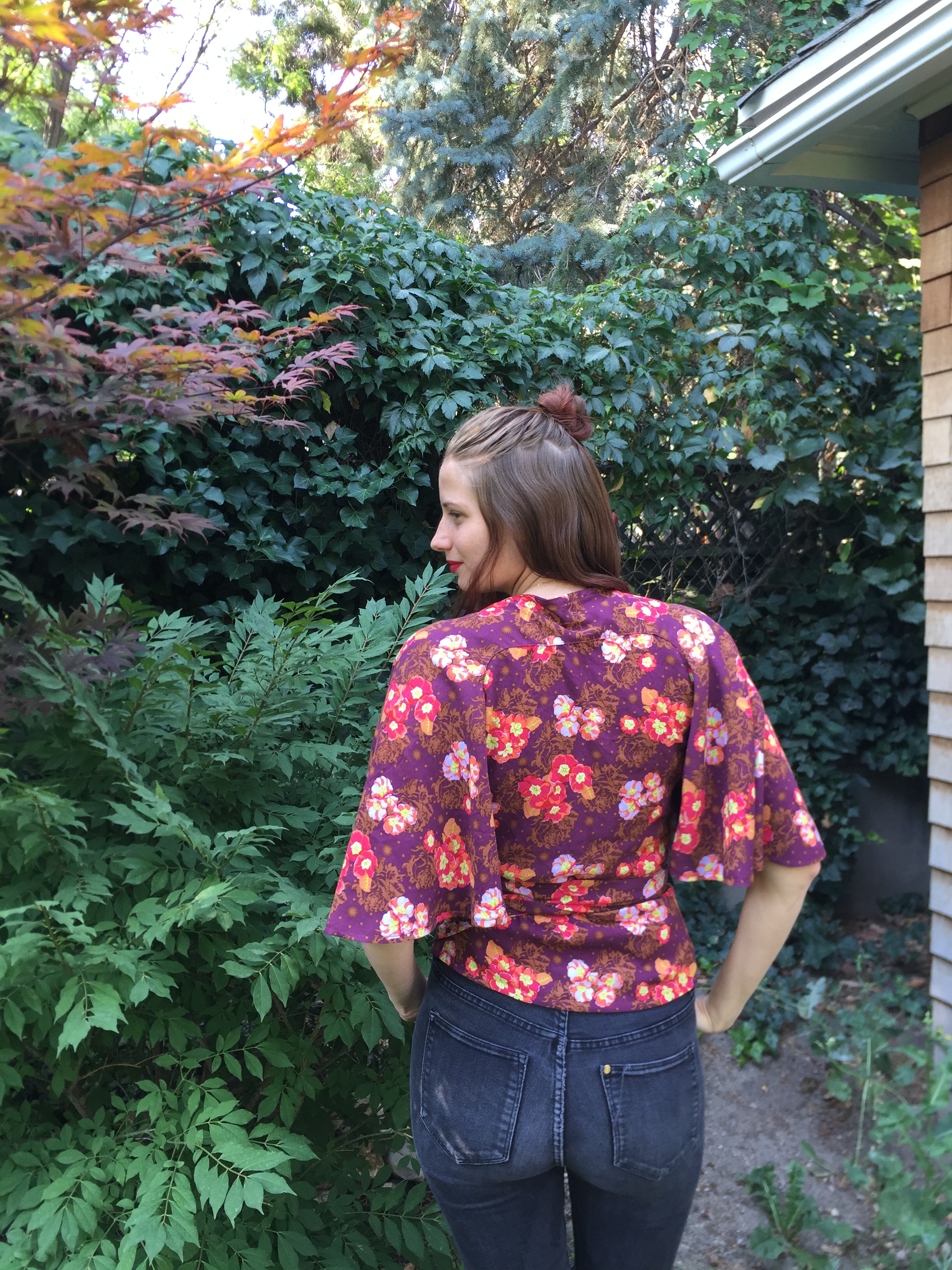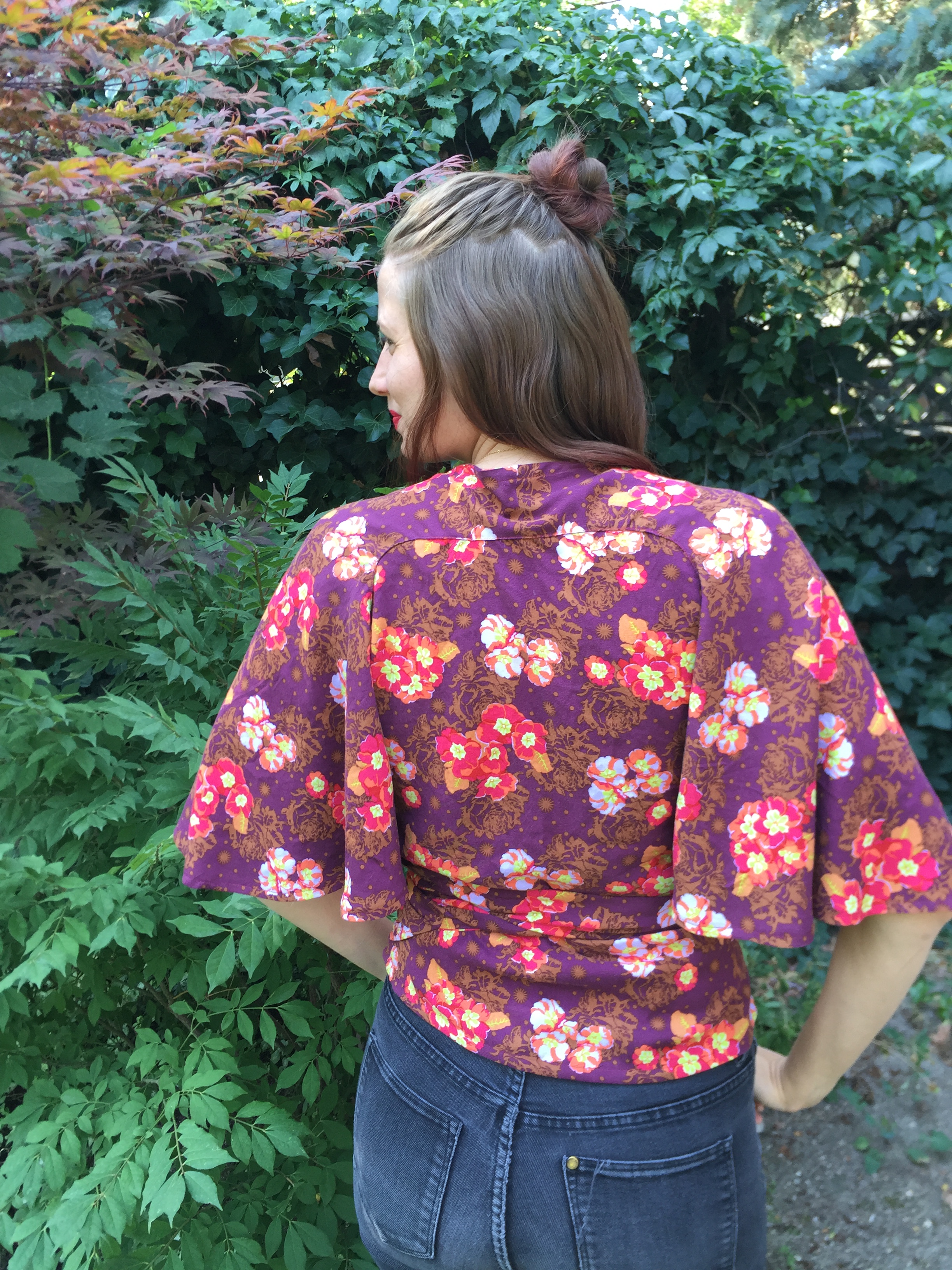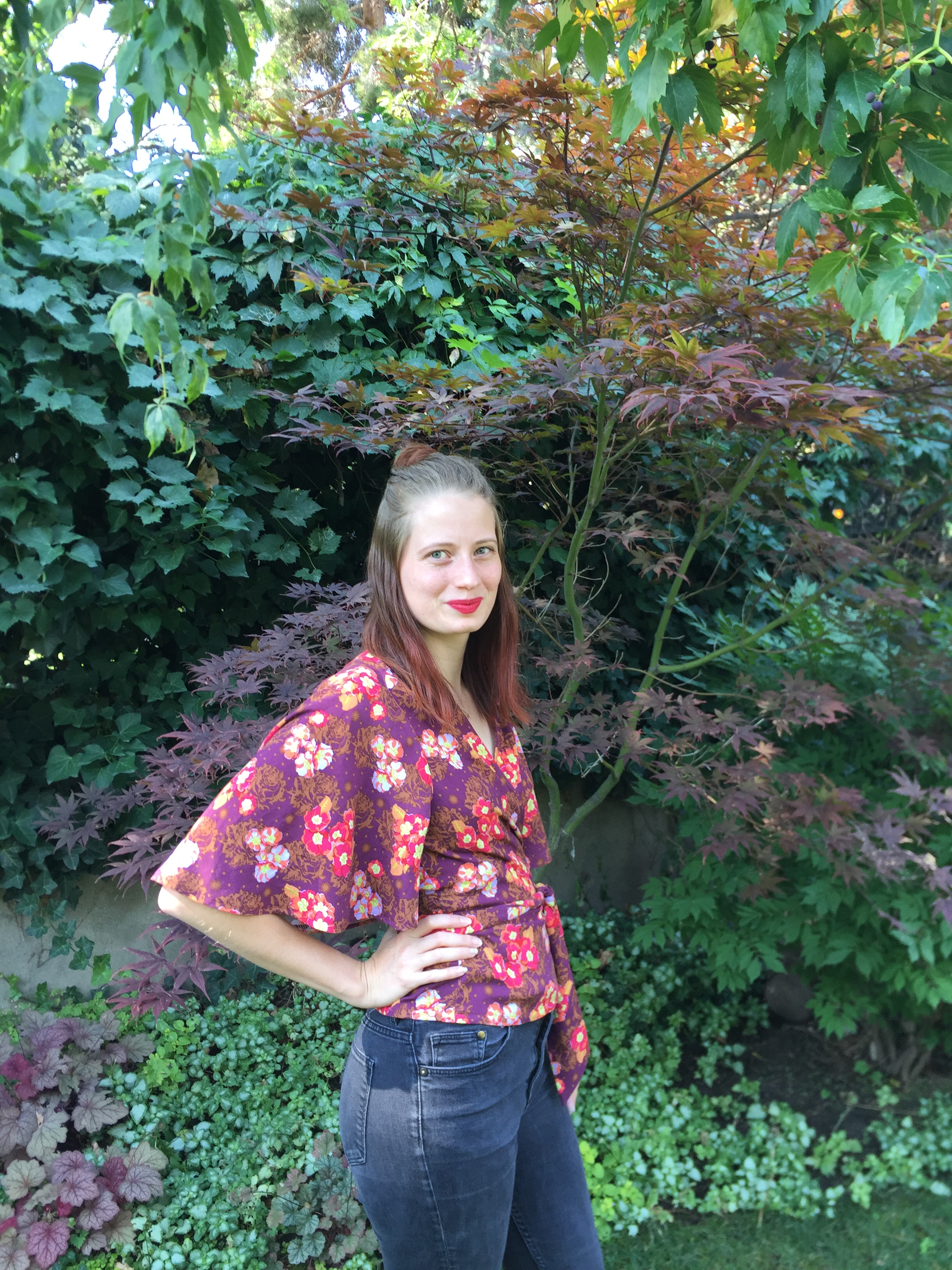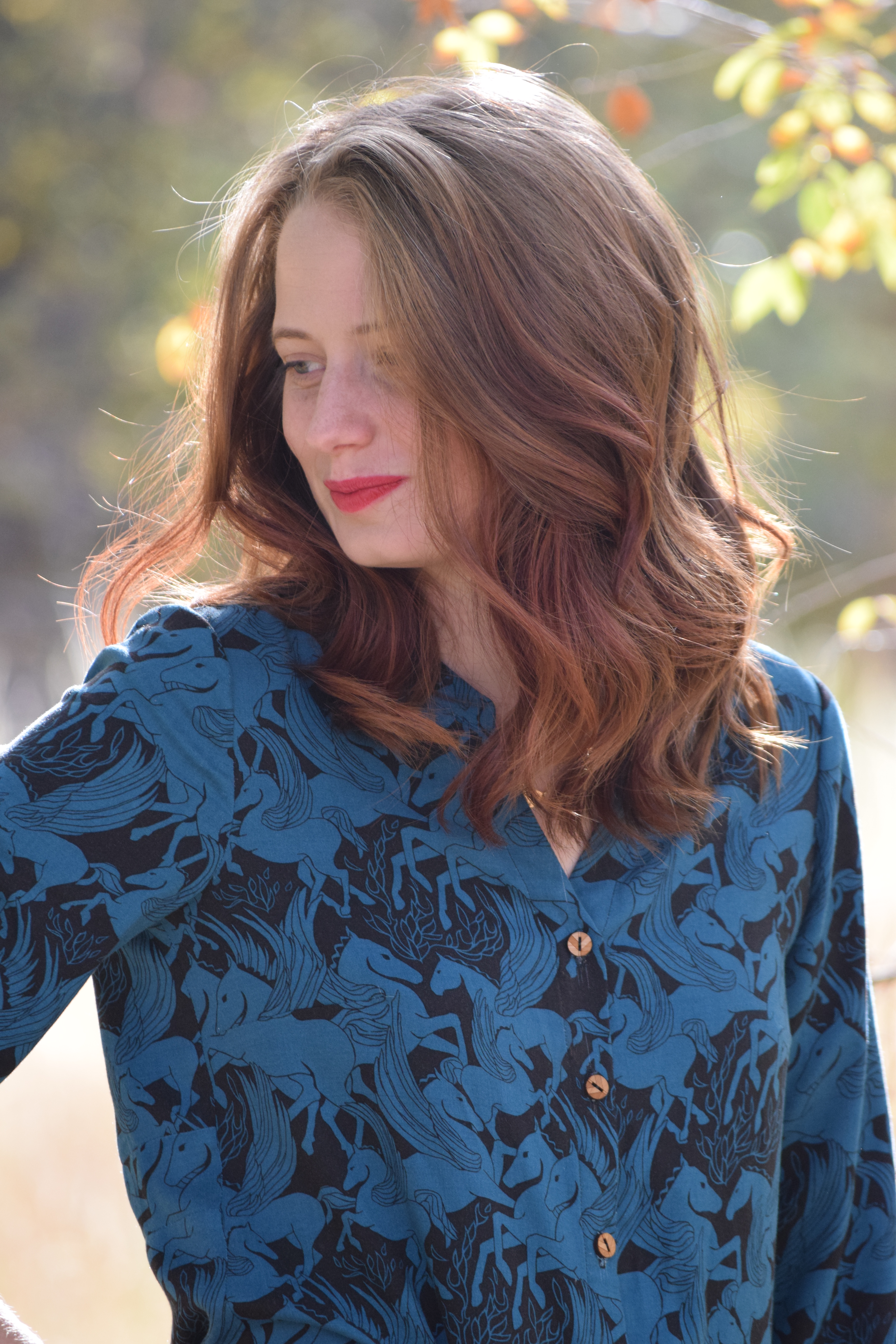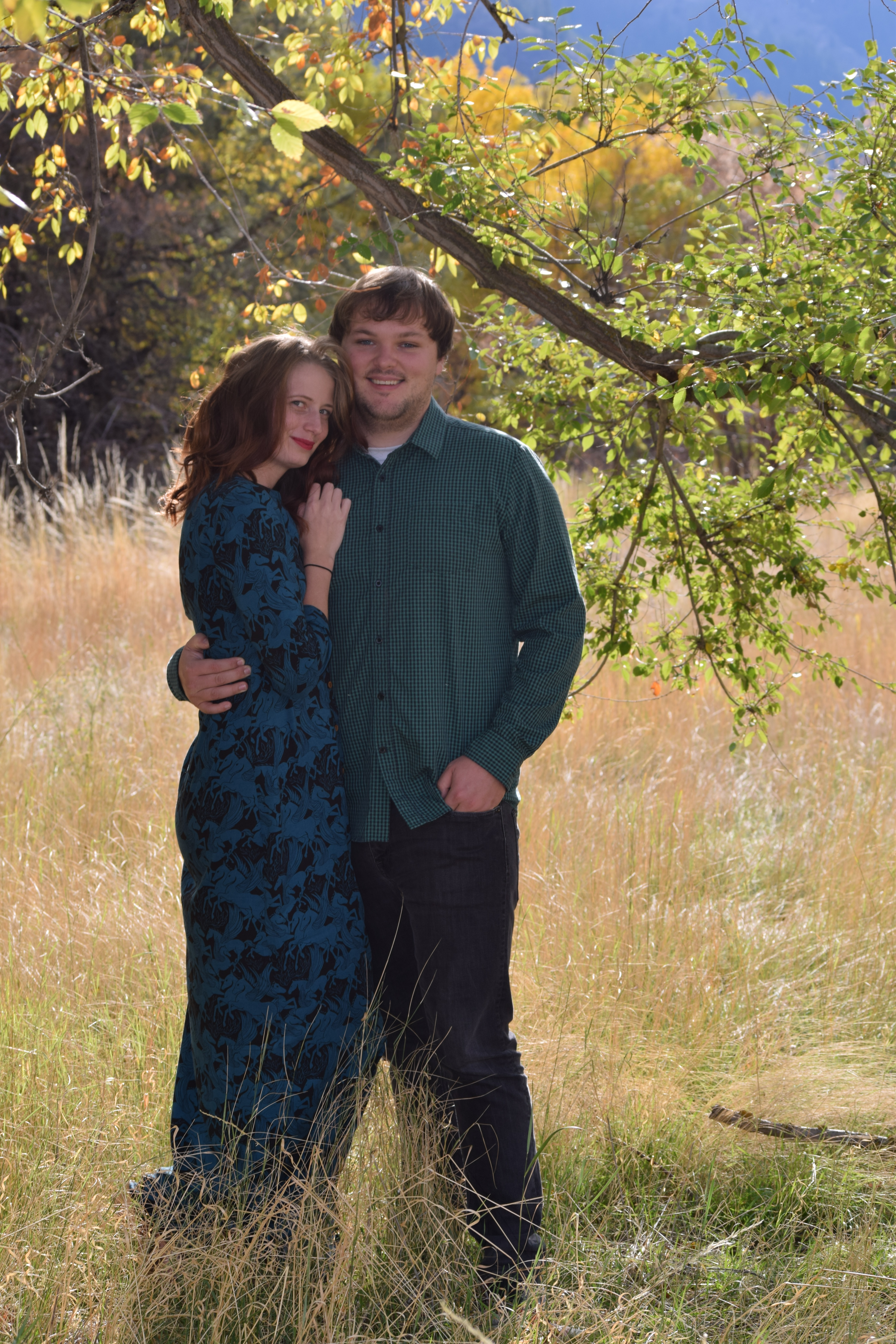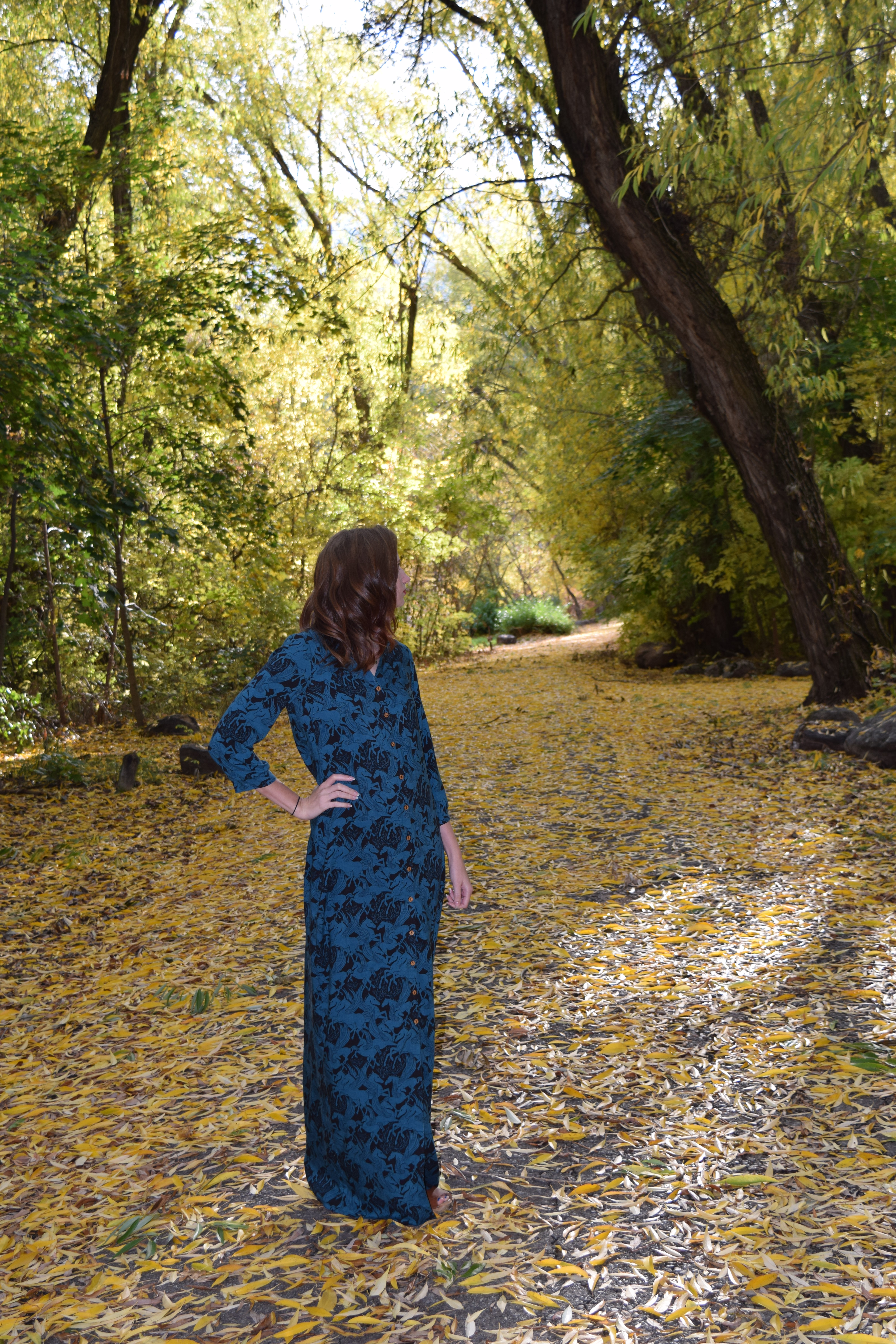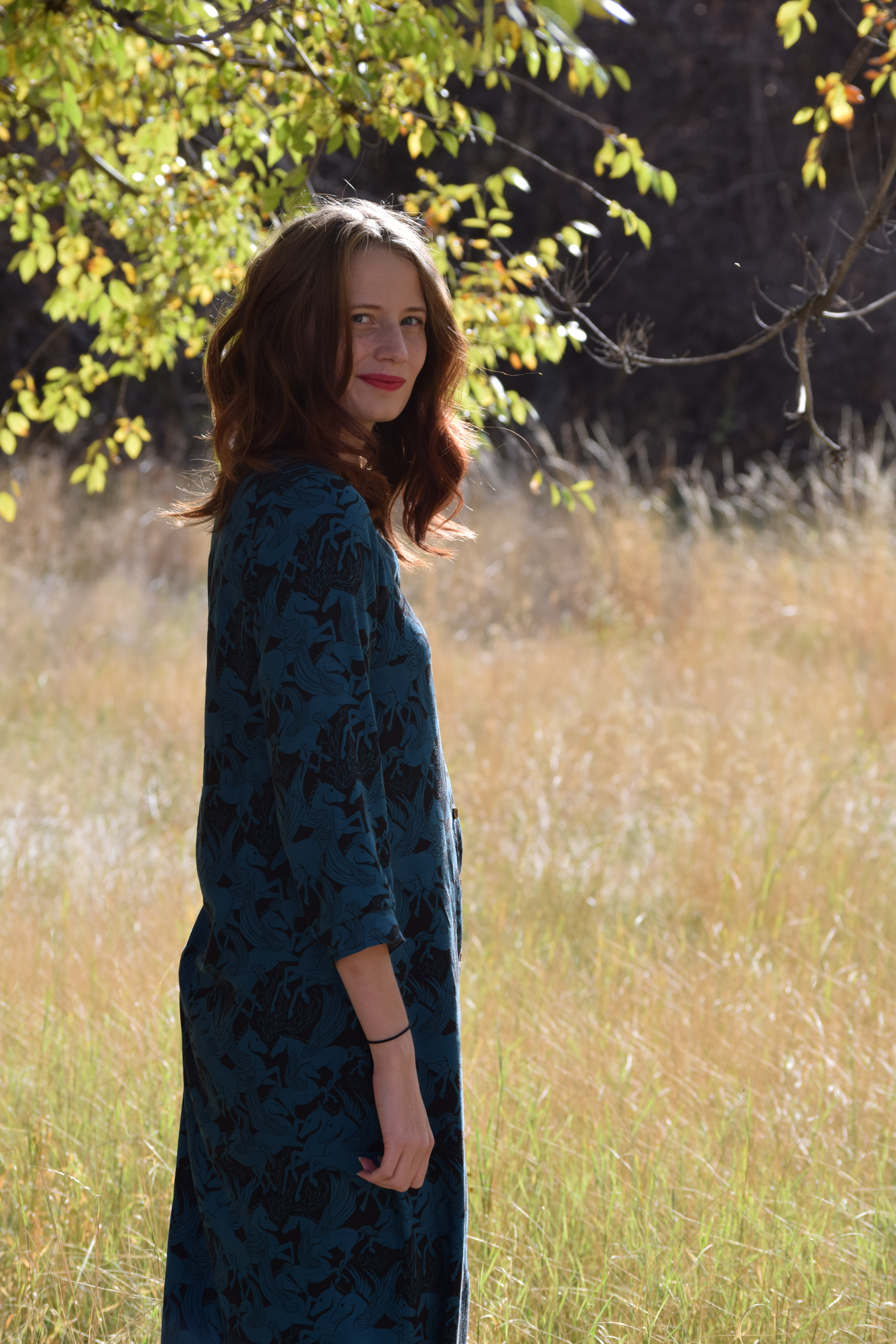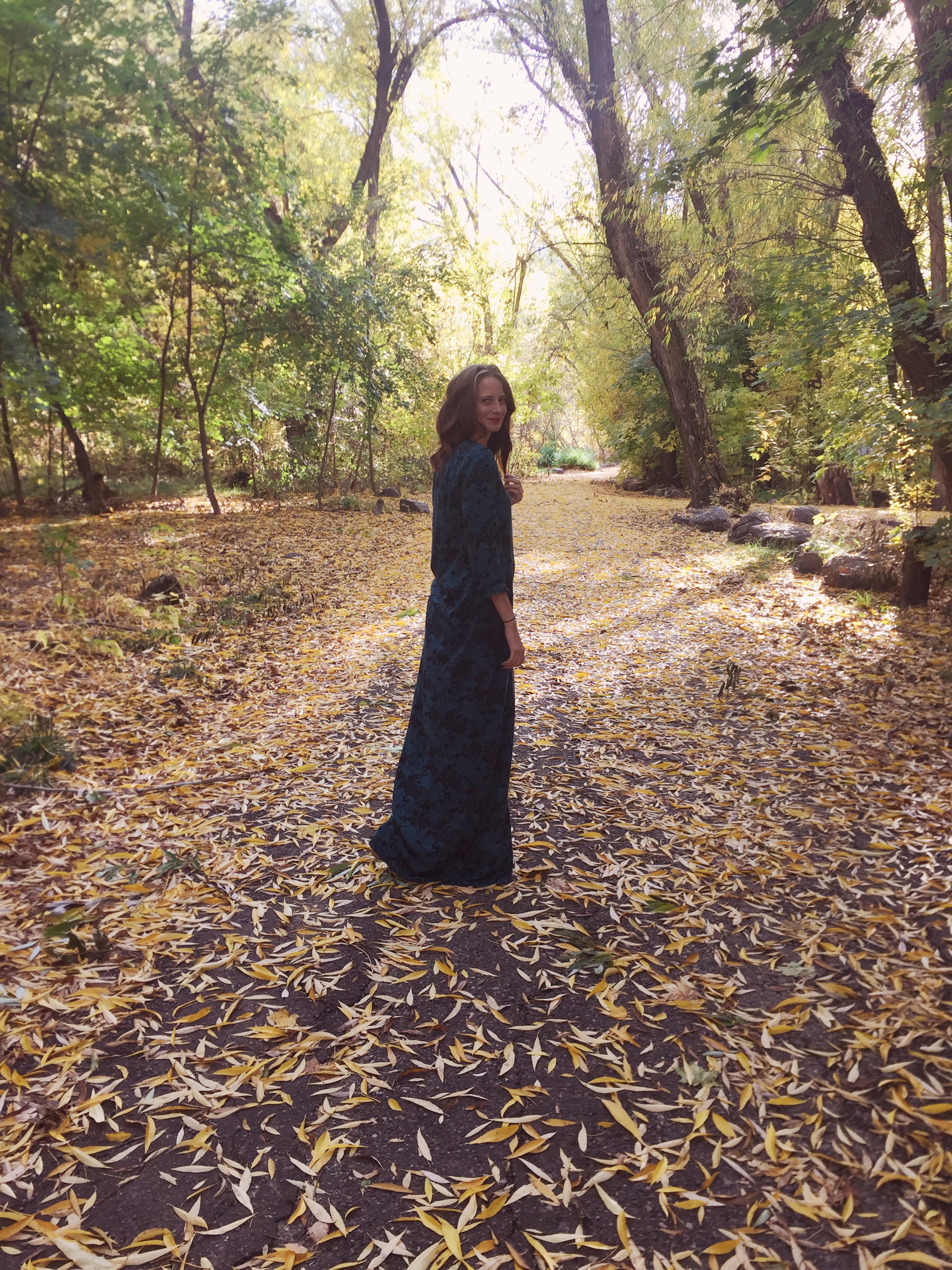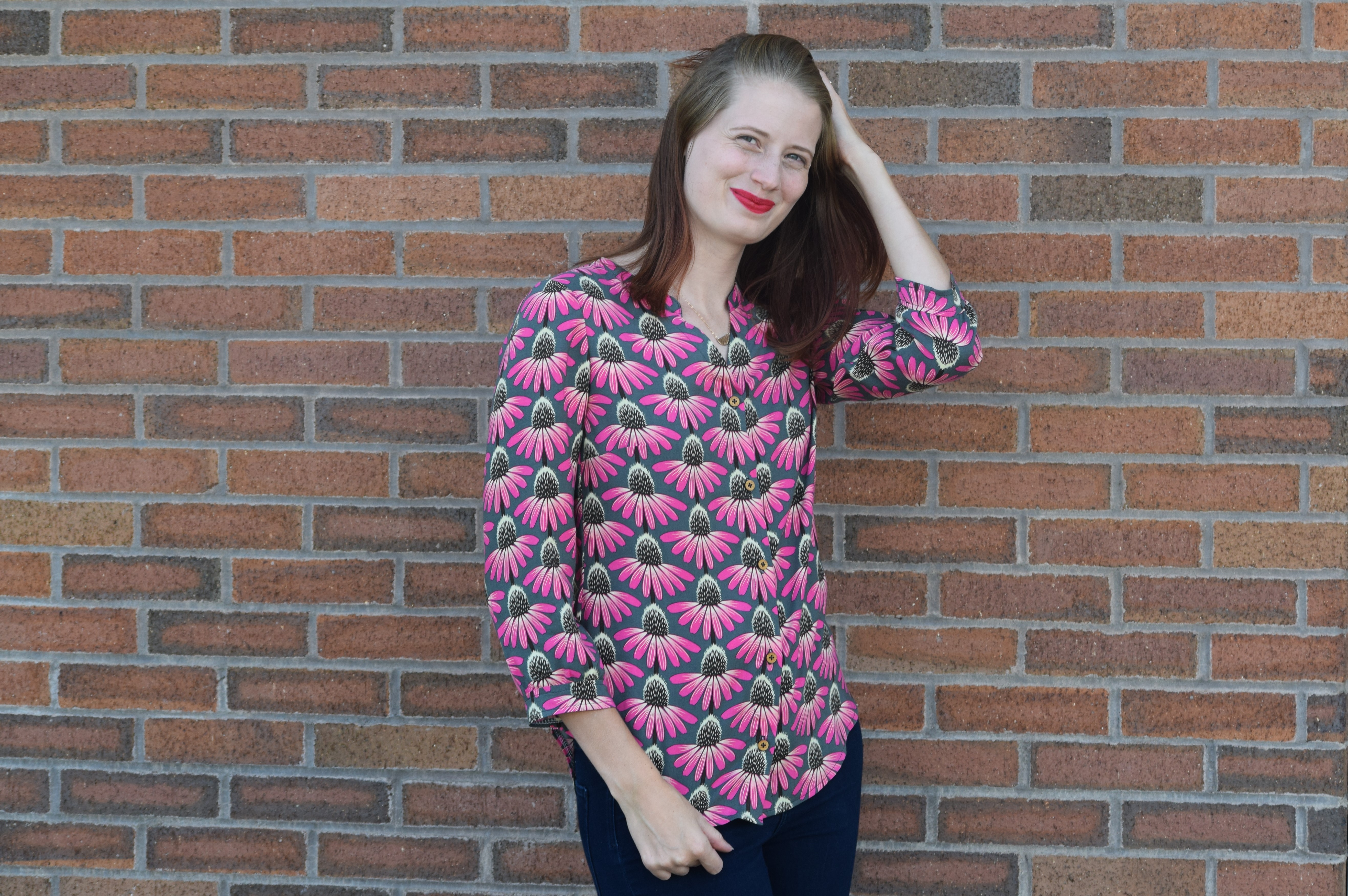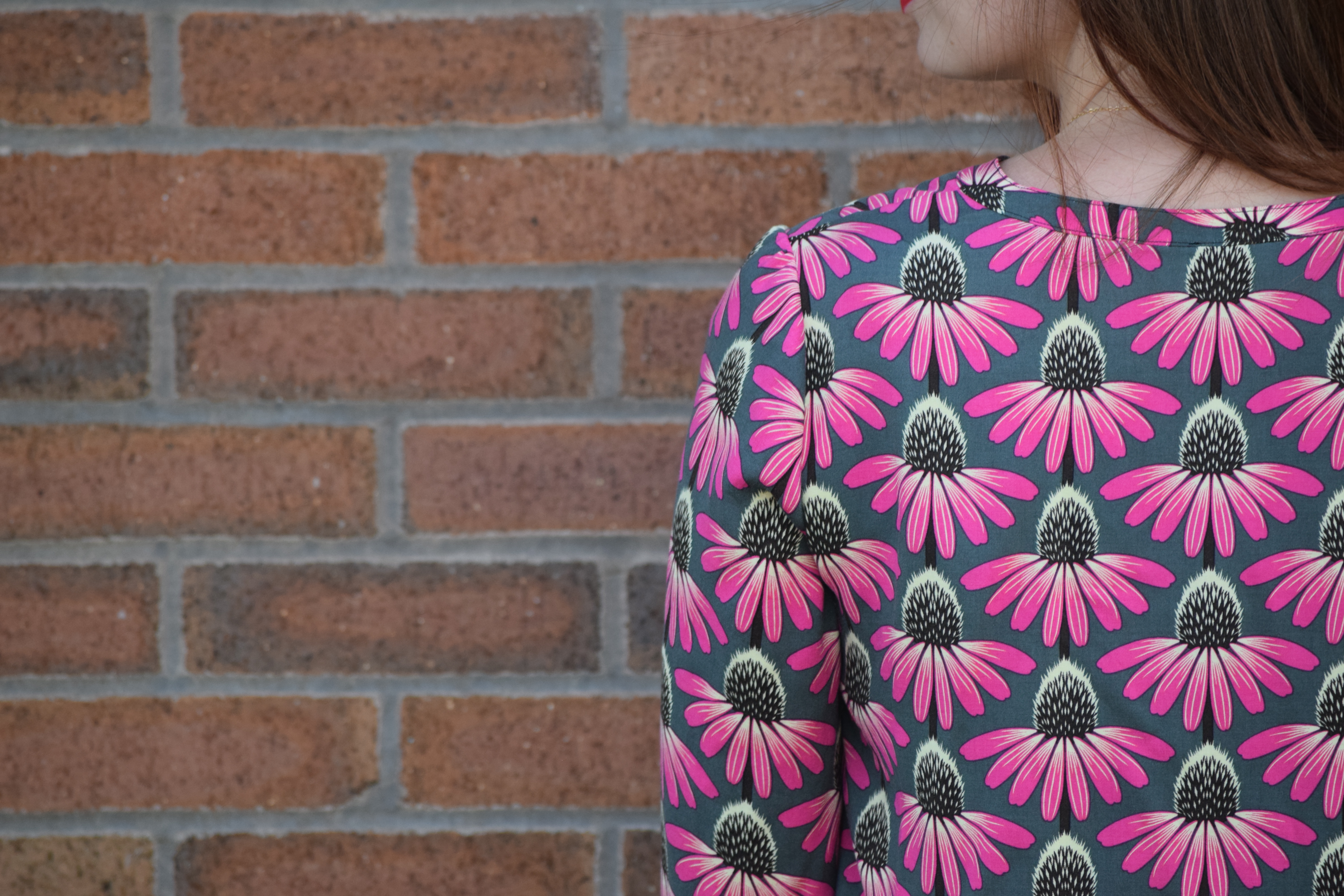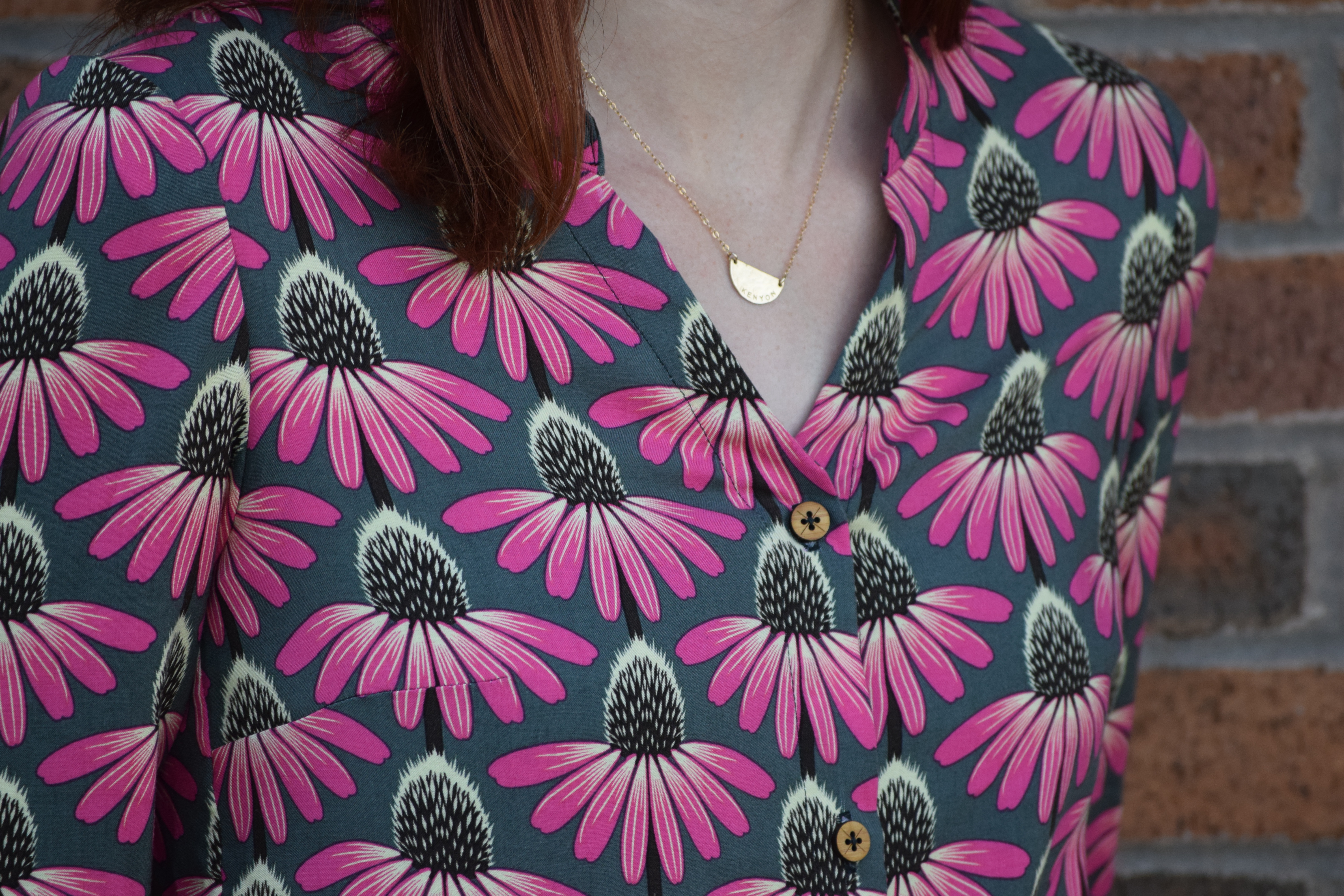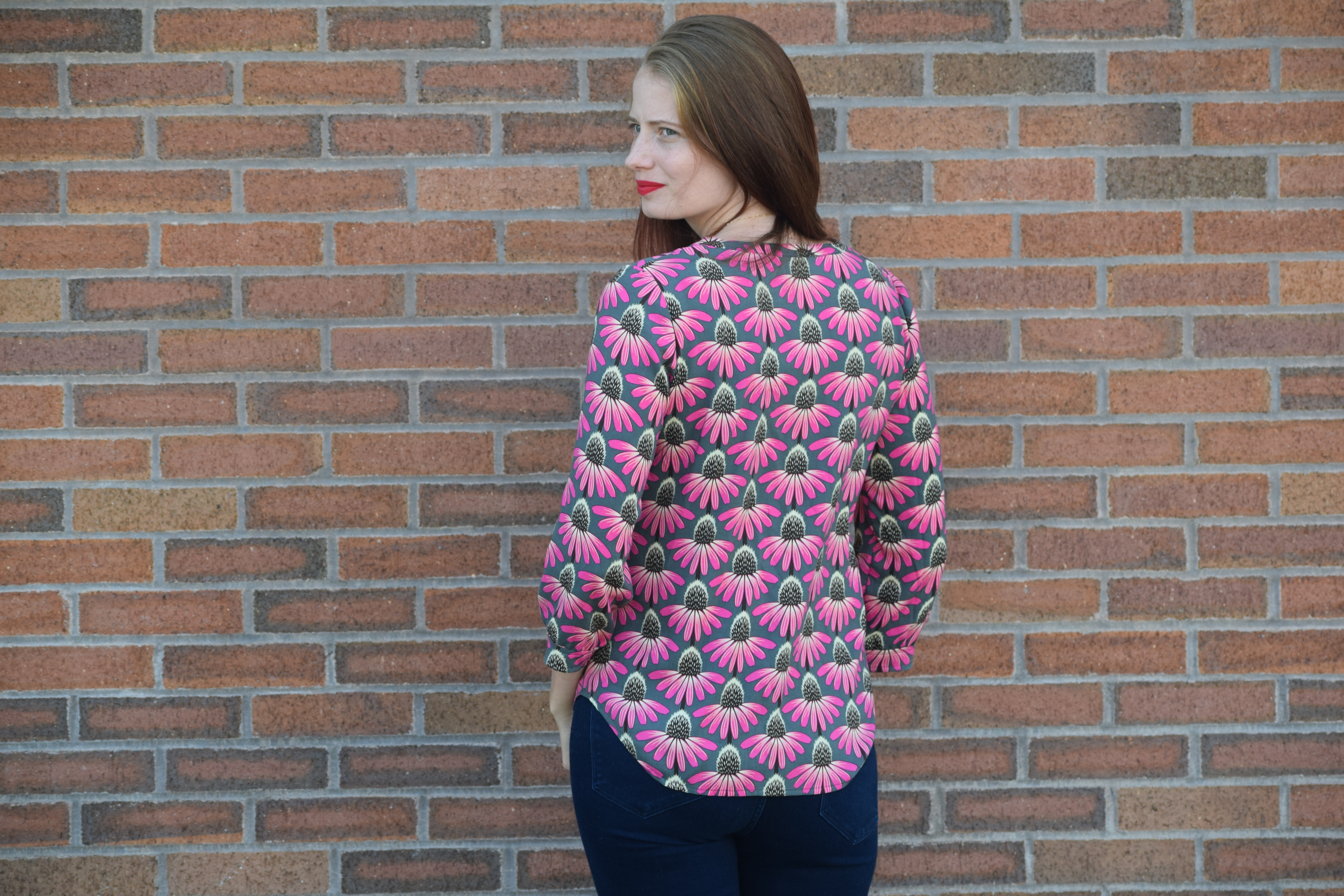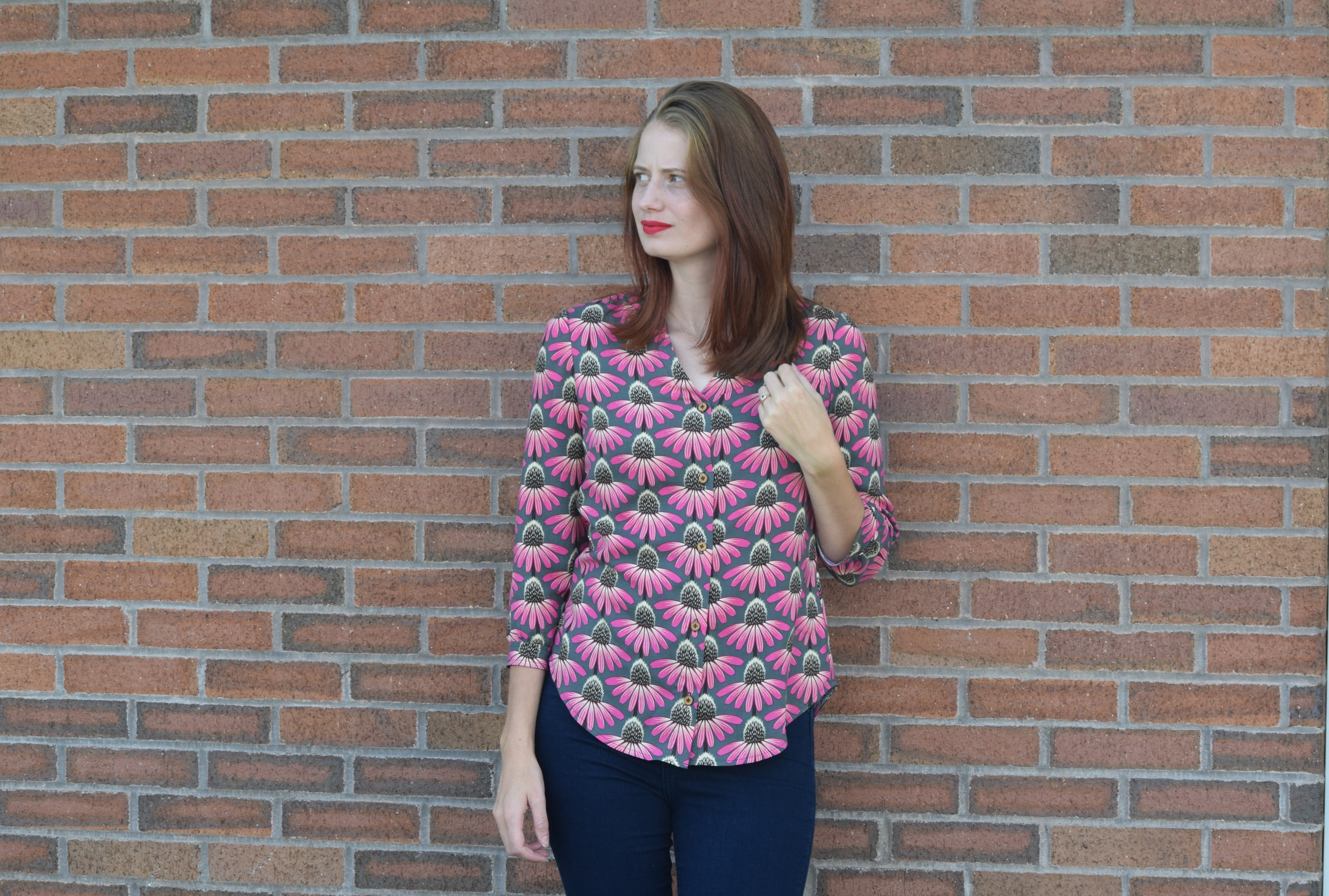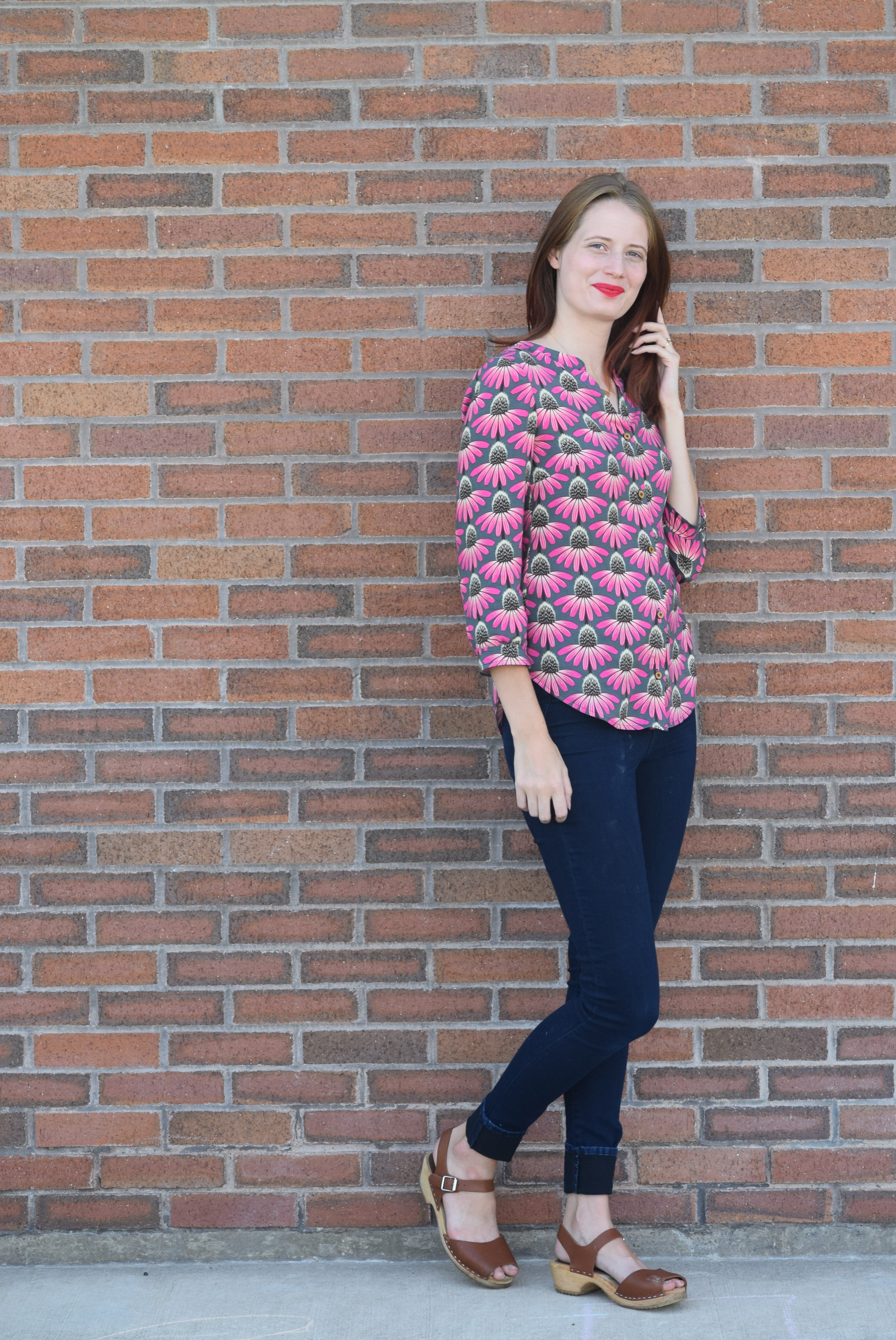Disclosure: Although the pattern was given to me for participation in this tour, all words and opinions are my own.
Clearly I can’t get enough of Ace and Jig inspired makes because here’s my second one in less than a week (Check out my A+J inspired Zadie Jumpsuit here). Joining the Coffee and Thread Madrid Dress Tour was the perfect opportunity to sew up my own version of a dress I’d been ogling for months (use code ‘madridtour’ for 25% off any Coffee and Thread patterns through June 28th). This required a bit of hacking but, I was up to the challenge. Are you ready for it?

Inspiration
Last fall I was watching Ace and Jig’s Instagram stories when my jaw dropped at upon seeing this version of their Ellis Dress. The pattern mixing and play on scale had me instantly hooked. I saved the photo, vowing to someday make one of my own. Time went by and I had all but forgotten about the dress until I saw Olga’s release of the Madrid Dress. Seeing the pattern reminded me of my dream dress and reignited the fire.

The Madrid Dress pattern isn’t an exact match for the A + J dress, but comes pretty darn close. There are two main differences:
- Madrid Dress is a faux wrap style while the A + J dress is a true wrap.
- Madrid Dress pattern actually has three tiers for the maxi length (hack details coming later in this post) while the A + J dress has 4.
Difference #1 was actually preferable for me as true wrap dresses sometimes leave me feeling like I’m just one wardrobe malfunction away from accidentally exposing everything to the world. Difference #2 was an easy fix that just required a bit of math which we’ll get to real soon. Overall, they’re pretty similar and the Madrid made for a great starting point.

Fabric
After singing the praises of Anna Maria Horner’s Loominous fabric lines in my last post, I’ll just cut to the chase here and say these 100% cotton yarn dyed wovens are incredible. Dreams are made of these fabrics. This dress uses two fabrics from her Loominous II line. The first is Dotted Line in Cobalt Blue (purchased from Graciebelle Fabrics on Etsy) which has black and pale coral lines stitched into the fabric. This specific fabric was actually the inspiration behind the hand embroidered stitches I added to the back of my Hampton Jean Jacket (here). The second fabric is Tribe in Algae (purchased from Hawthorne Threads), a mint green with stripes of cobalt, forest, and bits of pale pink woven throughout. Together they mimic the play on scale and bold fabric choices included in the inspiration dress.

The only thing that isn’t ideal about these two fabrics is the fact that they’re only 44″ wide. The narrow width meant that I had to order 9 yards of fabric (5 of the blue, 4 of the mint) to determine that I’d have enough of each. Honestly, the price of ordering 9 yards of fabric kept me from making this dress sooner. I hemmed and hawed over spending the money on a dress that likely wouldn’t get as much wear as most practical items in my wardrobe. I spent hours scouring Etsy and online fabric stores looking for the absolute best deals on these two fabrics and was lucky enough to find both for less than $10/yd. In the end, I decided that the dress wasn’t worth making at all if it wasn’t something I loved and that made the cost worth it. This time I threw caution to the wind and sewed a little frosting just for the fun of it.

Sizing
According to the size chart, my measurements fell into a 4 bust, 8 waist, and 10 hip. I started with a size 4 at the bust and graded to an 8 at the waist and below. There’s enough ease in the hips that I didn’t have to worry about grading out to a 10. I also added 1/2″ to the bodice length. As a side note here, the front bodice facing is missing a lengthen/shorten line. add this in by lining your facing piece up with your front bodice piece and marking the lengthen/shorten line. Then add the same amount of length to your facing piece. Since the rest of the sizing alterations happened in the hacking of the skirt, it’s finally time to get down to it.


Hacking the Skirt
Since the maxi version of the Madrid dress has three tiers and I wanted four, it was time to do a bit of math. My exact calculations here are based on a size 8 with a skirt length of 45″, I’ll include the formulas however, so you can do the math for your own custom size.
- Determine your desired length by measuring from your waist to the floor (mine was 45″).
- Divide the desired length by 4. (Desired length/4) Mine ended being 45/4 coming out to approximately 11.25″ per tier.
- Add 3/4″ to the desired tier length to account for 3/8″ seam allowances on top and bottom. I ended up with a total length of 12″ for each tier.
- Keep the width of the first tier as drafted, with the only change being to cut off length to fit your new desired tier length.
- Measure the width of the 1st tier. To account for seam allowances remove 3/4″ from that width. (1st tier width – 3/4″ = finished 1st tier width). Take the first tier width and multiply this by 1.5. This will give you the finished width of your 2nd tier. Divide the finished width by the width of your fabric. This will tell you how many (desired tier length) strips to cut. Add 3/4″ to the width of each strip to account for seam allowances.
- Follow the steps in #5 above to calculate for the 3rd tier, this time using the finished width of your 2nd tier multiplied by 1.5. Again, divide this number by your fabric width to determine the number of needed (desired tier length strips). Don’t forget to add in 3/4″ to the width of each strip for seam allowances.
- Again, follow the steps in #5 above to calculate for the 4th tier, this time using the finished width of your 3rd tier multiplied by 1.5. Again, divide this number by your fabric width to determine the number of needed (desired tier length strips). Don’t forget to add in 3/4″ to the width of each strip for seam allowances.
- It seams like a lot, but once you get the hang of it, the math is pretty simple. For reference, here’s what I cut out for my size 8 tiers: 2nd tier- 2 strips 12″x 46 and 1/8″ (the blue had to be cut down the length of the fabric instead of the width), 3rd tier- 4 strips 12″ x 34 and 3/4″, 4th tier- 3 strips 12″ by 69 and 7/8″ or 6 strips 12″ by 34 and 3/4″.
There you have it. Three tiers have now become four. Follow construction as instructed in the pattern directions (I did end up attaching the 2nd, 3rd, and 4th tiers to one another before attaching them to the finished bodice and first tier).

Final Thoughts
Gosh, it feels delightful to have a dress fit for twirling. It’s been a bit since I made a truly twirly dress and my inner 10 year old girl was squealing with joy while taking these photos. Gathering took approximately a million years but was 100% worth it. I’ve also had my fill of gathering for a bit so I’ll probably stay away from it for a few weeks at least.

Overall, I’m thrilled that this dress turned out how I envisioned. This is not always the case and I took a big gamble purchasing 9 yards of fabric for something that I wasn’t sure would work. My version is fuller than the Ace and Jig inspiration dress but, that just ups it’s twirling factor which is fine by me. Will I make this hack again, probably not because I don’t need more than one bright, fabulously twirly, pioneer chic dress in my wardrobe. Am I satisfied with the end result? Yes, 100%! That’s all I got for you today. Hope you’ve enjoyed reading about this dress as much as I enjoy wearing it!

Want to see more Coffee and Thread Madrid Dress inspiration? Be sure to check out the tour on Instagram by following the hashtags #ctmadriddress and #madriddresstour.

